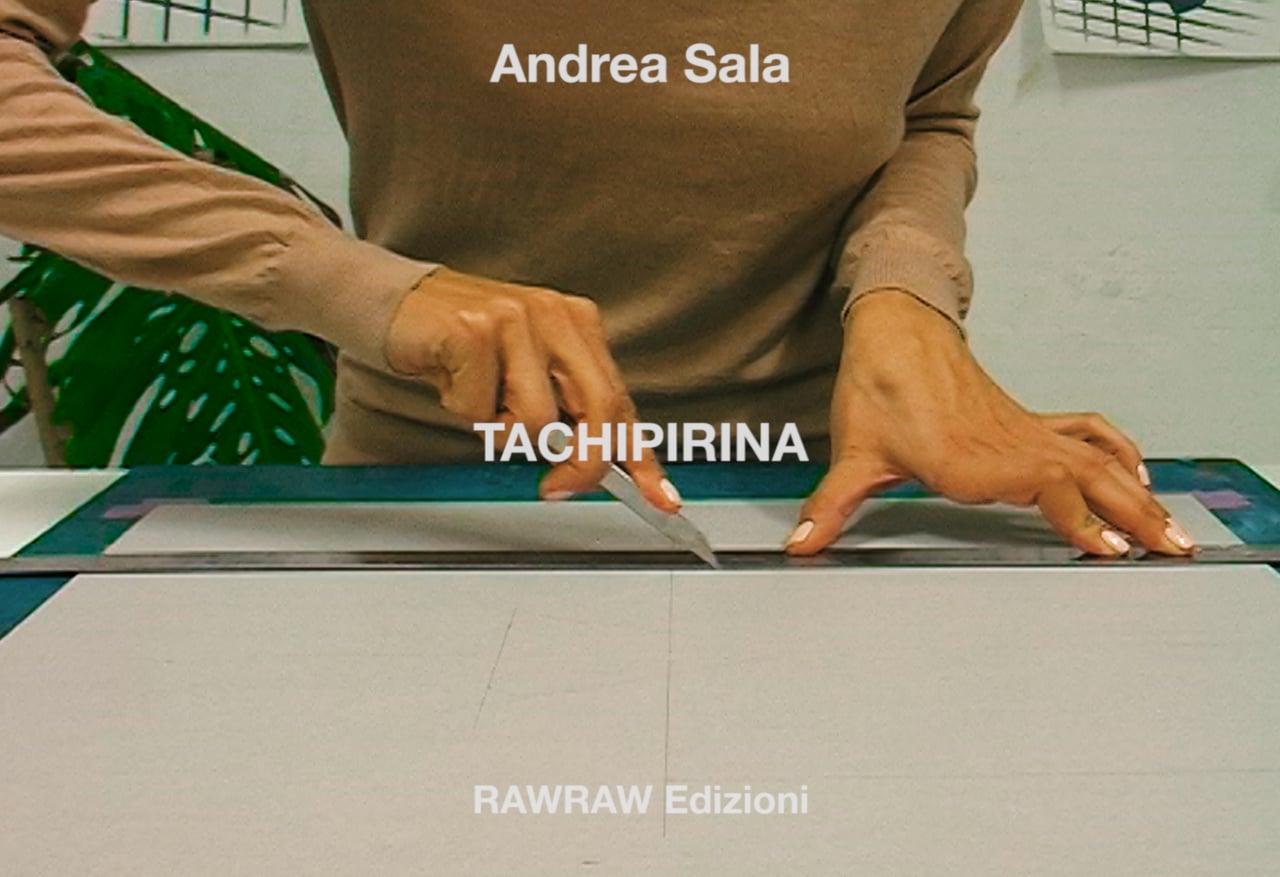TACHIPIRINA
by Andrea Sala
RAWRAW edizioni 2017
out 16.02.2017
rawraw.it
Goodbye authentic project: because any type of reality is authentically fictitious.
Alessandro Mendini, Architettura addio, Shakespeare & Compnay, 1981
An ancient shinto adage says: “What matters is not what you do, but how you do
it”. This is a fascinating concept because it eliminates any type of moral
consideration (whether you’re a sniper or a volunteer in the red cross there would
be no difference). Also it balances the social and economic levels (a good bricklayer
is comparable to a good architect), so that everyone can be recognized for their own
making, beyond the role or the public title, in favor of a professional and personal
continuous research.
Andrea Sala takes a Tachipirina every day. It doesn’t matter if he’s sick or not,
neither if this daily action is healthy for him. What really matters is to cultivate a
well-defined methodology, like his personal creative path, which always starts from
the creation of maquettes, in order to reach the final art piece.
Tachipirina, as an exibitions, narrates the process that Sala activates each time he
approaches to a new project, he describes and ennobles every passage from the
mind to the hand to the final product.
The method -in its positive meaning- becomes a statement and tells about the author:
becomes a statement and reveals author’s fetishes for materials, shapes and tools
(in many cases he makes them arrive directly from Japan or from the Unites States),
his proudness for the Brianza (expressed through the ongoing relationship with
craftsmans and suppliers of the area, that stretches between Varese and Como), the
irony and the detachment as useful tools for a designing awareness.
His approach is becoming always more uncommon, in the today’s artistic practice,
which is probably more focused on the final product rather than the many phases to
get there. The maquette, it’s advanced preparation, working with materials and
colors which are not the definitive ones, is a very common practice in the
architecture and design fields, with who Sala flirts with, observing and elaborating
intentions, subjects, themes and approaches.
Tachipirina undermines certain perceptions and views and opens with a sly and
sought uncertainty, an interlocking of surreal layers and values between the truth and
the falsehood, the big and the small, original and it’s copy. This leads to multiple
relationships and connections to the art and architecture history, which often give a
useful key of reading to the artworks.
In a proclaimed phase of post-truth, it becomes probably more important - and
challenging and fun - to sublimate the issue of certainty and veracity through the
realization and implementation of real fakes, another crucial point in which the
exhibition revolves around.
Subjects and objects that begin their journey from fiction in order to articulate and
provide a new aesthetic of truth, through their own representation. No partial truths,
just a truly false reality which can lead to projects and real objects like Tachipirina.
A clear and audacious escamotage in some recognizable cases, and for this reason
considerable and capable of transforming into a narration. Like it happens in the
best written novels or for the best directed movies, those who are able to build and
outline a real dimension are capable to stimulate the viewer through suggestion and
empathy.
In this sense, the exhibition becomes a network of entities, the art piece and it’s
representation are placed on the same perceptual and semantic level.
The maquette - finally - becomes the original, while scale, proportion and weight
disappear because without meaning, thanks to the photographic story.
The installation view that builds the editorial product - realized entirely by Andrea
Rossetti - unify and amplify many of the multiple layers that define Tachipirina. On
one side the maquettes are historicized and made into finished art pieces for the
photographic restitution, and on the other, the exhibition itself assumes a definitive
concreteness in the editorial dimension thanks to the process of interpretation and
testimony implemented by the photographer.

在T站说说你的看法~